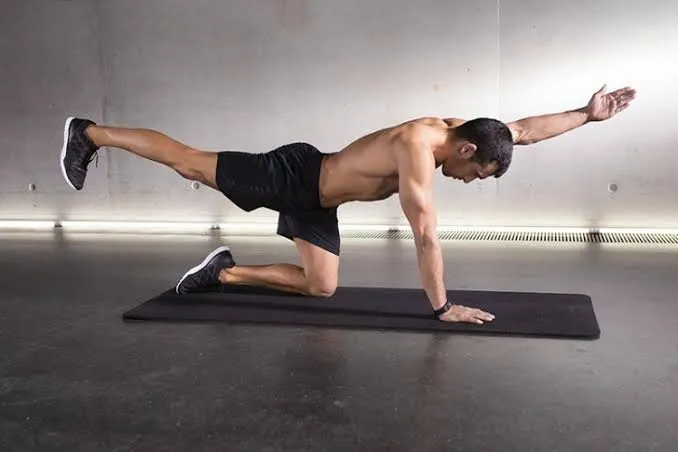Are you feeling stiff and restricted in your movements? Do you struggle to touch your toes or reach overhead without discomfort? It may be time to unlock your body’s potential by improving your flexibility and range of motion. Flexibility is not only essential for performing everyday tasks with ease but also plays a vital role in preventing injuries and enhancing athletic performance. In this comprehensive guide, we’ll explore effective strategies and techniques to help you increase flexibility, enhance mobility, and unleash your body’s full range of motion.
Understanding Flexibility: The Key to Fluid Movement
Flexibility refers to the ability of your muscles and joints to move through their full range of motion without pain or restriction. It encompasses various factors, including muscle length, joint mobility, and tissue elasticity. While some individuals naturally possess greater flexibility than others, flexibility is a trainable attribute that can be improved with targeted stretching and mobility exercises. By increasing your flexibility, you can improve posture, reduce muscle tension, and enhance overall movement efficiency, leading to greater comfort and freedom in your daily activities.
Incorporating Dynamic Stretching: A Dynamic Approach to Flexibility
Dynamic stretching involves moving the body through a series of fluid, controlled movements that gently stretch and lengthen the muscles and connective tissues. Unlike static stretching, which involves holding a stretch for an extended period, dynamic stretching helps improve flexibility while simultaneously activating and warming up the muscles. Incorporating dynamic stretches into your pre-workout routine can help prepare your body for physical activity, enhance circulation, and improve joint mobility. Examples of dynamic stretches include leg swings, arm circles, walking lunges, and trunk twists.
Harnessing the Power of Static Stretching: Holding the Key to Greater Flexibility
While dynamic stretching is ideal for warming up the body and preparing for activity, static stretching takes a different approach by holding a stretch in a stationary position for a prolonged period. Static stretching helps elongate the muscles and improve flexibility by gradually lengthening the muscle fibers and increasing the range of motion around the joints. Incorporating static stretches into your post-workout routine or as part of a dedicated flexibility training session can help improve muscle flexibility, reduce muscle soreness, and enhance overall mobility. Focus on targeting major muscle groups such as the hamstrings, quadriceps, calves, chest, back, and shoulders with static stretches held for 20-30 seconds per muscle group.
Exploring Proprioceptive Neuromuscular Facilitation (PNF): A Proven Technique for Enhancing Flexibility
Proprioceptive Neuromuscular Facilitation (PNF) is an advanced stretching technique that involves alternating between muscle contraction and relaxation to improve flexibility and range of motion. PNF techniques typically involve a partner or a resistance band to facilitate deeper stretching and greater muscle activation. One common PNF technique is the contract-relax method, where you contract the target muscle for several seconds against resistance, followed by a brief relaxation phase during which the muscle is stretched further. PNF stretching can be highly effective for improving flexibility, particularly when performed under the guidance of a trained professional or fitness instructor.
Integrating Foam Rolling and Self-Myofascial Release: Unleashing Tension and Enhancing Mobility
In addition to traditional stretching techniques, foam rolling and self-myofascial release can be valuable tools for improving flexibility and reducing muscle tightness. Foam rolling involves using a cylindrical foam roller to apply pressure to specific areas of the body, targeting tight muscles and trigger points to release tension and improve blood flow. Self-myofascial release techniques, such as using massage balls or handheld massage tools, can also help break up adhesions and knots in the fascia, the connective tissue that surrounds and supports the muscles. By incorporating foam rolling and self-myofascial release into your flexibility routine, you can alleviate muscle stiffness, enhance joint mobility, and promote overall relaxation and well-being.
FAQs (Frequently Asked Questions)
- How often should I stretch to improve flexibility? Aim to incorporate stretching exercises into your daily routine, focusing on major muscle groups and areas of tightness. Consistency is key to seeing improvements in flexibility over time.
- Is it better to stretch before or after exercise? Both dynamic stretching before exercise and static stretching after exercise can be beneficial for improving flexibility and preventing injury. However, it’s essential to warm up the body before engaging in static stretching to avoid injury.
- Can I overstretch and injure myself? Yes, overstretching or stretching too aggressively can lead to muscle strains, ligament sprains, or other injuries. It’s essential to listen to your body, avoid bouncing or jerking movements during stretching, and never push past the point of discomfort.
- Are there specific stretches for targeting tight muscles? Yes, there are many stretches designed to target specific muscles and areas of tightness in the body. Examples include the standing hamstring stretch, seated butterfly stretch, pigeon pose for hip flexibility, and shoulder stretches like the doorway stretch or triceps stretch.
- How long does it take to see improvements in flexibility? The timeline for seeing improvements in flexibility varies depending on individual factors such as age, genetics, current flexibility levels, and consistency of stretching practice. With regular stretching and proper technique, you may begin to notice improvements in flexibility within a few weeks to a few months.

